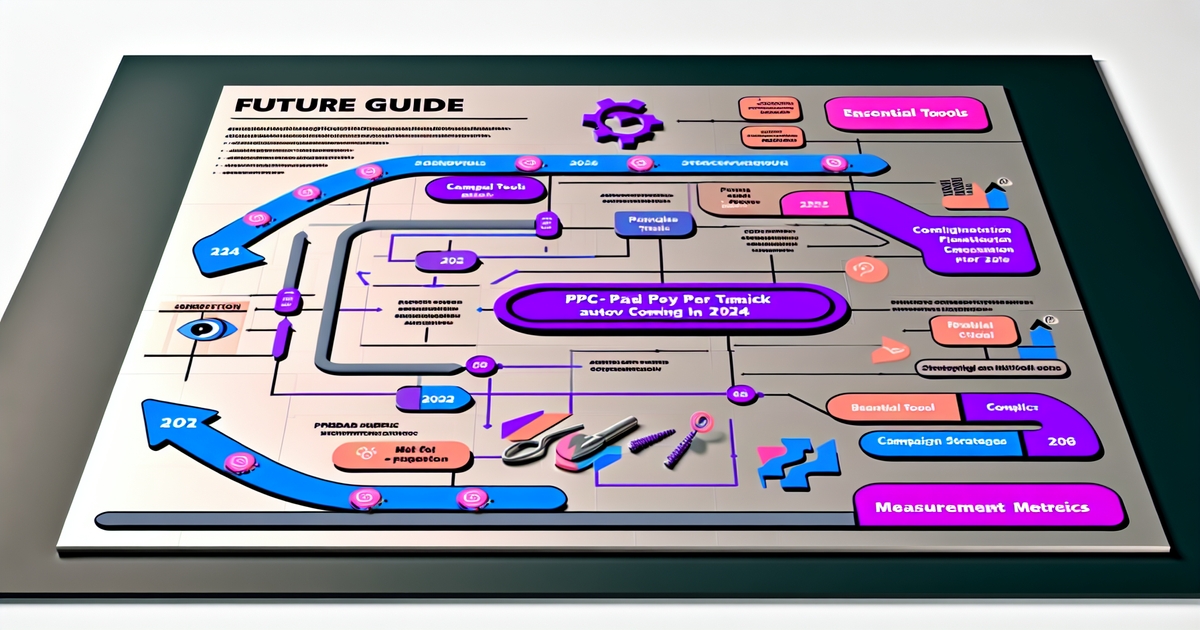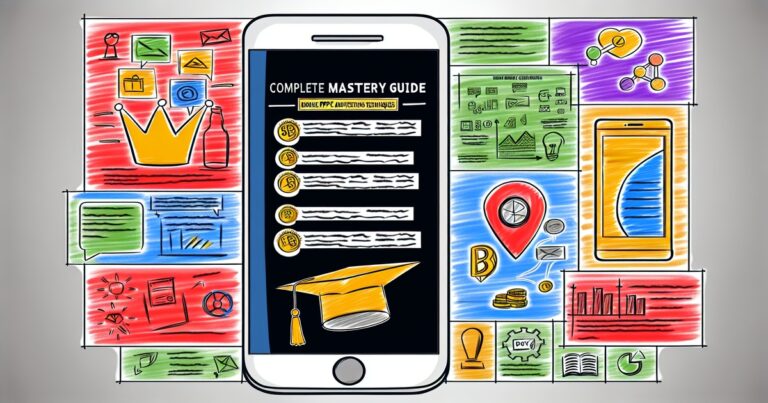Ever wondered how to skyrocket your online advertising without burning the midnight oil? Welcome to the world of PPC automation tools, where efficiency meets effectiveness in managing ad campaigns, improving ad performance, across various ad platforms, and identifying valuable keywords. In today’s fast-paced digital landscape, staying ahead of the curve means leveraging technology that works smarter, not harder. These tools are game-changers for marketers aiming to optimize their pay-per-click campaigns with precision and scale their efforts seamlessly. From bid management to keyword research, they take the grunt work out of your hands, letting you focus on strategy and creativity. Dive into how these powerful assistants can transform your online advertising approach and why ignoring them could mean missing out on untapped potential.
Key Takeaways
- PPC automation tools can significantly enhance the efficiency and effectiveness of your campaigns by automating repetitive tasks and optimizing bids and ads based on data analytics.
- When integrating automation into Google Ads, it’s crucial to align strategies with your marketing goals to ensure that automation works in your favor, enhancing ad performance and reaching target audiences more effectively.
- Budgeting wisely for PPC campaigns is essential; automation can help manage costs by adjusting bids in real-time based on performance, but setting a clear budget upfront is key to maintaining control over spending.
- Analytics play a pivotal role in the success of PPC campaigns. Utilize automation tools to track performance metrics and make data-driven decisions to optimize campaigns continually.
- While Google Ads offers built-in automation features, exploring third-party PPC automation tools can provide additional functionalities and insights, potentially offering a competitive edge.
- It’s important to be aware of the limitations and potential downsides of relying too heavily on automation, such as loss of personal touch in ads or over-reliance on algorithms. Balancing automation with human oversight ensures campaigns remain aligned with overall marketing objectives.
Understanding PPC Automation
Key Features
PPC automation tools are designed to make your advertising efforts more effective and less time-consuming. They automate tasks that you’d otherwise have to do manually. This includes adjusting bids, pausing underperforming ads, shifting budget to top-performing campaigns, updating account keywords, and refining plans for better leads.
These tools can integrate with multiple ad platforms like Google Ads and Facebook Ads. This means enterprises can manage all their campaigns, account, keywords, and integrations from a single dashboard. It simplifies the process significantly.
Another critical feature is real-time optimization capabilities. The tools analyze data as it comes in, making instant adjustments to improve performance. You don’t have to wait until the end of the week or month for insights into your account, enterprises, or ad campaigns.
Benefits
Enhanced ROI
Using PPC automation tools, enterprises and advertisers see a lower cost per acquisition because the software optimizes bids and keywords for each auction automatically in their account. Higher conversion rates come from targeting more precisely and showing ads at optimal times.
Ads spend gets optimized across campaigns based on performance data, leading to better allocation of budget resources for enterprises using the tool.
Improved Efficiency
Manual campaign adjustments take hours out of your day—time that could be spent on strategy or content creation. With automation, these adjustments to keywords happen in real-time without any effort on your part using the tool.
The market changes quickly; what worked as a tool yesterday might not work today. Automation allows quick adaptation by analyzing trends and adjusting strategies accordingly.
Workflow processes become streamlined when repetitive tasks are automated, freeing up teams to focus on creative and strategic initiatives rather than mundane task management.
Types of Tools
There’s a variety of PPC automation tools available catering to different needs within campaign management:
Bid management software helps adjust bids across platforms based on set goals like CPA targets or ROAS.
Creative optimization platforms test various ad elements (like headlines or images) simultaneously to find the best performing combinations.
Audience segmentation solutions identify distinct groups within your target audience for more personalized ad targeting.
Each type offers unique benefits but often works best when used together as part of an integrated approach towards PPC management.
Strategies for Google Ads Automation
Automated Bidding
Automated bidding harnesses machine learning to optimize your bids. This means it can adjust how much you bid on ads based on how likely they are to achieve your performance goals. It’s a smart way to avoid over or underbidding.
For example, if your goal is more website visits, automated bidding will increase bids on users more likely to click through. This takes the guesswork out of setting bids manually.
Another benefit is time-saving. You no longer need to spend hours analyzing data to decide on your bids. The system does it for you, and often with better accuracy thanks to its vast data analysis capabilities.
Ad Creative Testing
Ad creative testing involves A/B testing different versions of ad copy and visuals. It helps identify which combinations perform best.
This strategy uses automation tools that rotate ad creatives automatically, pushing the top performers more frequently. This ensures your ads remain fresh and effective without constant manual intervention.
The analytics provided by these tests give deep insights into what works and what doesn’t in your ad campaigns. For instance, you might discover that images with people perform better than those without or that a specific call-to-action generates more clicks.
Audience Targeting
Audience targeting leverages user behavior and demographics for precision advertising. Dynamic segmentation allows for personalized ads tailored specifically to segments of your audience based on their online activities or demographic information.
Moreover, using lookalike audiences can significantly enhance reach. These are users similar to your existing customers but who haven’t interacted with your brand yet.
- Pros:
- Reaches potential customers efficiently.
- Improves conversion rates through personalization.
- Cons:
- Requires detailed initial audience data.
Tools leveraging PPC automation make creating and managing these targeted campaigns simpler and more effective than ever before.
Budgeting for PPC Campaigns
Setting Budgets
PPC automation tools have revolutionized how we approach budgeting for PPC campaigns. These tools provide a systematic way to allocate daily or monthly ad spend effectively. They analyze past performance data to recommend budget adjustments. This ensures your money goes where it’s most likely to generate returns.
For example, if a certain campaign consistently outperforms others, the tool might suggest increasing its budget. Conversely, underperforming areas can be identified quickly, allowing you to reduce spending or tweak strategies there.
Another critical feature is the implementation of caps. Caps are essential in preventing overspending on your campaigns. They act as safety nets, ensuring you never exceed your allocated budget despite any sudden spikes in traffic or cost per click (CPC). This peace of mind allows marketers to focus more on strategy and less on financial micromanagement.
Managing Costs
The key to successful PPC advertising lies not just in setting budgets but also in managing costs efficiently. Tools that monitor CPC and cost per action (CPA) are invaluable here. They provide real-time insights into how much you’re paying for clicks and actions, respectively.
Alert systems within these tools play a crucial role too. They notify you of unusual spending patterns that could indicate issues such as click fraud or targeting errors. Early detection helps avoid unnecessary expenditure and keeps campaigns running smoothly.
Moreover, optimization suggestions offered by these tools can significantly reduce costs without sacrificing results.
- Refining keyword lists removes costly underperformers.
- Adjusting bid strategies focuses spending on times when conversions are more likely.
- Improving ad quality raises scores which can lower CPC rates.
Analytics for PPC Campaigns
Automated Reporting
Automated reporting simplifies the tracking of PPC campaigns. Customizable dashboards let you focus on what matters most. You can see clicks, impressions, and conversions at a glance.
Dashboards are easy to adjust. You choose the metrics that matter to your campaign. This customization means you’re always looking at relevant data.
Scheduled reports make life easier too. They can come via email or platform alerts. Imagine getting weekly updates without lifting a finger.
Visuals help us understand data quicker. Charts and graphs turn numbers into insights. With automated reporting, analyzing your PPC ads becomes less of a chore and more of an advantage.
Data-Driven Insights
Understanding performance trends is crucial for success in PPC advertising. By identifying these trends over time, you can adapt strategies swiftly, ensuring your campaigns remain competitive and efficient.
Performance analysis isn’t just about looking backward; it’s also predictive. Predictive analytics use past data to forecast future outcomes. This foresight allows for better planning of upcoming PPC campaigns.
Competitor benchmarking tools offer another layer of insight. They show how your ads stack up against others in your industry. This comparison helps pinpoint areas for improvement.
Third-Party PPC Automation Tools
Enterprise-Level Options
For businesses managing large ad accounts, enterprise-level PPC automation tools offer scalable solutions. These tools are designed to handle vast amounts of data and complex campaign structures efficiently. They come with advanced security features that ensure your data remains protected. This is crucial in today’s digital age where information security cannot be taken lightly.
Moreover, these enterprise-level options often provide dedicated support and account management services. This means you get personalized assistance for your specific needs. Imagine having a team of experts ready to help optimize your campaigns and troubleshoot any issues that arise. It’s like having an extension of your own team focused solely on making your PPC efforts more successful.
Best Practices
When incorporating PPC automation tools into your strategy, there are several best practices to follow:
- Regularly review the automation rules and settings.
- Balance automation with human oversight.
- Adopt a continuous testing and learning approach.
Regular reviews help ensure that the tool aligns with changing market trends and business goals. It prevents “set it and forget it” syndrome, which can lead to wasted spend or missed opportunities.
Balancing automation with human oversight is critical too. While these tools can save time by automating repetitive tasks, they lack the nuance of human judgment—especially in understanding subtleties within creative content or audience responses.
Lastly, adopting a continuous testing approach allows you to refine strategies over time actively. For instance, A/B testing different ad copies or targeting parameters can uncover valuable insights that automated algorithms alone might not identify initially.
Cons of Google Ads Automation Tools
Limitations
Google Ads automation tools can streamline your PPC campaigns, but they’re not perfect. One big issue is dependence on data quality and quantity. If your data isn’t good or there’s not enough of it, the tool might make wrong decisions. This could waste money or miss opportunities.
Another problem is the potential lack of creativity in automated ads. Machines follow patterns; they don’t think outside the box. Your ads might end up looking like everyone else’s, which won’t help you stand out.
Lastly, these tools struggle with complex market nuances. They’re great at analyzing numbers but understanding subtle market shifts? Not so much. For example, a sudden trend among your target audience might go unnoticed by automation but easily spotted by a human.
Overcoming Challenges
Despite these limitations, it’s possible to get more from Google Ads automation tools with some smart strategies.
Firstly, combining human intuition with automation tools can lead to better results. Humans can add creative touches that machines can’t and spot emerging trends that aren’t yet reflected in the data.
Setting clear objectives and KPIs for automated campaigns is crucial too. Knowing what success looks like helps ensure that your automation efforts are aligned with your business goals.
- Define specific targets for each campaign.
- Regularly review performance against these KPIs.
Regular updates and refinements to automation algorithms are also essential.
- Adjust bidding strategies based on recent performance.
- Update keyword lists as new trends emerge. This keeps your campaigns fresh and responsive to changing market conditions.
Advanced Automation Techniques
Data-Driven Alerts
Scripts
Automation tools offer custom scripts for specific needs. These scripts can automate tasks you do often. For instance, adjusting bids based on stock levels or weather conditions. There are script libraries too. They are treasure troves for common automation tasks.
But, use scripts wisely. Follow guidelines to avoid mishaps like overspending your budget.
Rule-Driven Alerts
Rule-driven alerts are vital in PPC automation tools. They notify you of big changes or issues in campaign performance. You can set custom thresholds for these alerts to activate.
This means getting an email or SMS when something important happens with your ads, allowing quick action.
Smart Campaigns
Smart campaigns simplify setup for beginners or small businesses. They automate targeting and bidding based on your goals, making them user-friendly.
After setting up, there’s minimal need to manage them daily.
These advanced techniques show the power of automation features in PPC management. They balance out some cons mentioned earlier by offering precise control and efficiency improvements. With smart campaigns and data-driven alerts, managing PPC becomes less daunting and more strategic.
Pros and Cons of PPC Automation
Scalability
PPC automation tools make managing multiple campaigns or accounts much simpler. They allow for easy adjustments to scale up strategies that are proving successful. This means if you find a particular approach is working well, these tools can quickly increase its reach.
They also ensure resources are used efficiently across large-scale campaigns. Instead of manually adjusting each campaign, automation does it for you. This saves time and ensures your best strategies get the attention they deserve.
However, relying too heavily on automation for scalability can lead to a lack of personal touch in your campaigns. Sometimes, nuanced decisions based on human insight are necessary for the fine-tuning of a campaign’s strategy.
Reducing Errors
One significant advantage of using PPC automation tools is their ability to minimize human error. Campaign management involves many repetitive tasks which are prone to mistakes when done manually. Automation helps by ensuring these tasks are performed accurately every time.
These tools maintain consistency in applying rules and strategies across all your accounts. This uniformity ensures that all campaigns adhere to your set standards without deviation caused by manual oversight.
Furthermore, they’re designed to catch common mistakes before they affect performance. For instance, if a budget cap was mistakenly exceeded or an ad targeted the wrong audience segment, automated systems could flag this early on.
Yet, there’s always the risk that over-reliance on automation might overlook unique cases where exceptions to general rules should apply but don’t due to rigid programming parameters.
Comprehensive Guide to Managing PPC Campaigns
Strategies and Platforms
Choosing the right PPC automation tool is crucial. It should match your strategy needs. First, list what you need from a tool. This might include keyword research capabilities, ad creation assistance, or advanced targeting options.
Different platforms have their strengths and weaknesses. For instance, Google Ads offers vast audience reach but can be competitive and costly. Bing Ads might offer lower competition but also a smaller audience.
Integration with other marketing tools is essential for a seamless workflow. Check if the PPC tool can connect with your CRM software or email marketing platform. This ensures data flows freely between systems for more efficient campaign management.
Analytics and Budgeting
Effective campaign management goes beyond just setting up ads; it involves deep analysis and smart budgeting.
Look for tools that provide in-depth analytics beyond clicks and impressions. You want insights into conversion rates, customer lifetime value, and return on ad spend (ROAS). These metrics help fine-tune campaigns for better performance.
Forecasting tools are valuable for planning future budgets based on past data. They allow you to predict how much you should invest in different campaigns or keywords to meet your goals.
Real-time budget reallocation features are game-changers. They let you shift funds to high-performing ads quickly when an opportunity arises. This agility maximizes ROI by capitalizing on trends as they happen.
Closing Thoughts
Diving into PPC automation can feel like you’re unlocking a secret level in your marketing game. It’s not just about making things easier; it’s about steering your campaigns to success with precision and insight that manual efforts can’t match. From understanding the basics, strategizing with Google Ads, to budgeting wisely and analyzing data like a pro – you’ve covered some serious ground. But remember, it’s not all sunshine and rainbows. The cons of automation tools serve as a reminder to stay hands-on and keep your strategy sharp.
So, what’s the next move? Take these insights, mix them with your unique business needs, and start experimenting. Don’t shy away from third-party tools or advanced techniques that could give you an edge. And always, always keep learning. The world of PPC is ever-evolving, and staying ahead means staying informed. Ready to take your PPC campaigns to the next level? Let’s get cracking!
Frequently Asked Questions
What is PPC Automation?
PPC automation uses technology to optimize and manage your pay-per-click advertising campaigns. It’s like having a digital assistant that helps you run your ads more efficiently.
How does Google Ads Automation work?
Google Ads Automation utilizes machine learning to adjust bids, target audiences, and optimize ads based on performance goals. Think of it as putting your ad campaign on autopilot while still steering towards your desired destination.
Can I set a budget for my PPC campaigns?
Absolutely! Setting a budget is crucial in controlling how much you spend on your PPC campaigns. It’s like setting a spending limit on your credit card to avoid surprises at the end of the month.
What are third-party PPC automation tools?
Third-party PPC automation tools are software solutions developed by companies other than Google. They offer additional features for managing and optimizing PPC campaigns, sort of like having an extra toolbox for specific tasks.
What are some downsides to using Google Ads Automation Tools?
While handy, they can sometimes lack flexibility or require higher budgets, making them not always ideal for smaller businesses or those with very niche targeting needs. Imagine trying to use a sledgehammer when sometimes all you need is a scalpel.
Are there advanced techniques in PPC automation?
Yes, advanced techniques include using AI for predictive analysis or integrating with CRM systems for hyper-targeted ads. It’s akin to shifting from manual driving to sports mode in an already powerful car – it just gets more sophisticated and targeted.
What should I consider before using PPC Automation?
Consider the pros and cons carefully; while automation saves time and can enhance campaign performance, it may also reduce control over individual ad adjustments and increase costs. Weighing these factors is like balancing speed against precision in achieving your marketing goals.









